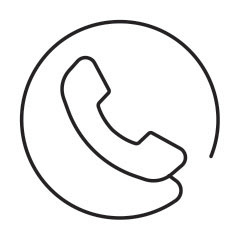COPD Action Plan
Make an Appointment
Our team is here to help you make an appointment with the specialists that you need.
COPD Action Plan
Overview
If you have chronic obstructive pulmonary disease (COPD), your symptoms may get worse over a short time and stay bad. This is called an exacerbation (say "egg-ZASS-er-BAY-shun") or flare-up. Your shortness of breath, cough, or mucus may get worse.
Many irritants or triggers can cause a flare-up. Common triggers are respiratory infections such as colds, the flu, and pneumonia. Other triggers include indoor and outdoor air pollution such as smoke, fumes, and soot.
Work with your doctor to make a plan for dealing with a flare-up. You can better manage it if you plan ahead.
How do you use a COPD action plan?
A COPD action plan is a written plan that tells you how to treat your COPD and what to do when your symptoms get worse. It helps you make quick decisions in an emergency. Your action plan has three zones based on your symptoms.
For each zone, ask your doctor what type—and what amount—of medicine you should take for your symptoms.
Green Zone: Feeling well
Your symptoms
- Usual amount of coughing and mucus
- Normal activities and good appetite
- Sleeping well
What to do
- Take daily COPD medicines.
- Do normal activities and breathing exercises.
- Continue other treatments, such as using oxygen, if needed.
- Avoid triggers.
Yellow Zone: Flare-up
Your symptoms
- New or worse trouble breathing
- More coughing than normal
- More or thicker mucus or a change in the color of your mucus
- Quick-relief medicines needed more often
- Quick-relief medicines not helping
- Tight chest or flu or cold symptoms
- Less of an appetite
- Trouble sleeping because of coughing or breathing problems
- Less energy than usual to do your normal activities
What to do
- Take quick-relief and normal daily medicines.
- Take oral corticosteroids, antibiotics, or both as prescribed.
- Do pursed-lip breathing.
- If you use oxygen, do not increase it without talking to your doctor.
- Avoid triggers such as smoke.
- Get rest.
- Call your doctor if symptoms don't improve.
Red Zone: Get emergency care right away
Your symptoms
- Very short of breath. It may be hard to talk or move around.
- Can't do your usual activities
- Fever with shaking and chills
- New or worse chest pain or other symptoms
- Coughing up blood
- Confused or very sleepy
- Can't sleep because of coughing or breathing problems
What to do
- Call or get medical care right away.
- While getting help, follow any instructions your doctor recommended.
Contact information
Be sure your action plan includes this information.
Name of my doctor or clinic:
Phone number of my doctor or clinic:
Who to call in an emergency:
Emergency contact phone number:
When should you call for help?

Call anytime you think you may need emergency care. For example, call if:
- You have severe trouble breathing.
- You have severe chest pain.
Call your doctor now or seek immediate medical care if:
- You have new or worse shortness of breath.
- You have new or worse chest pain.
- You cough up blood.
- You have a fever.
- You have used your quick-relief medicine or followed your plan for what to do if your symptoms get worse, but you are still short of breath.
Watch closely for changes in your health, and be sure to contact your doctor if:
- You are coughing more deeply or more often, especially if you notice more mucus or a change in the color of your mucus.
- You have new or increased swelling in your legs or belly.
- You have feelings of anxiety or depression.
- You need to use your antibiotic or steroid pills.
- You are not getting better as expected.
Credits
Current as of: October 25, 2024
Author: Ignite Healthwise, LLC Staff
Clinical Review Board
All Healthwise education is reviewed by a team that includes physicians, nurses, advanced practitioners, registered dieticians, and other healthcare professionals.
This information does not replace the advice of a doctor. Ignite Healthwise, LLC, disclaims any warranty or liability for your use of this information. Your use of this information means that you agree to the Terms of Use. Learn how we develop our content.
To learn more about Ignite Healthwise, LLC, visit webmdignite.com.
© 2024-2025 Ignite Healthwise, LLC.
This information does not replace the advice of a doctor. Ignite Healthwise, LLC, disclaims any warranty or liability for your use of this information. Your use of this information means that you agree to the Terms of Use. Learn how we develop our content.



